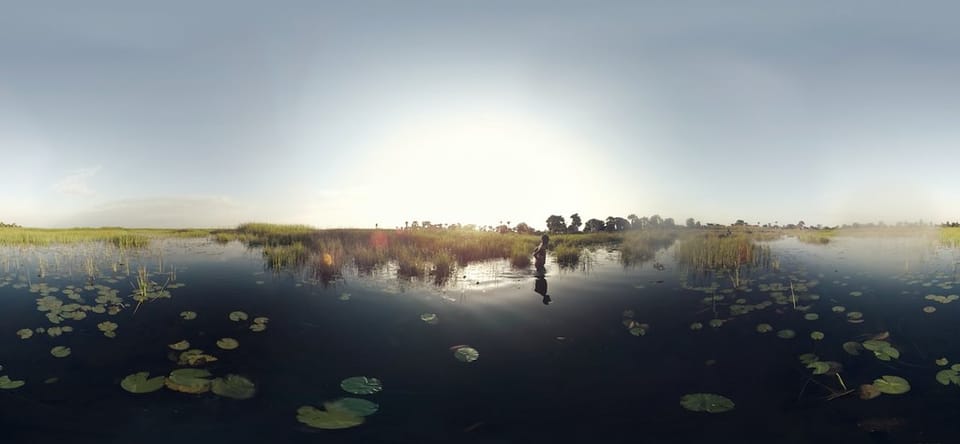The New York Times wants you to "experience" its stories with virtual reality

The New York Times has a new virtual reality offering—and no, it isn’t called Jayson Blair.
NYT VR, which launched last weekend, is a new storytelling venture or, as The Grey Lady calls it with alarming frequency, an “experience.” Using the NYT VR app, you can view (experience?) video stories with a Google Cardboard virtual reality headset or by simply moving the phone around in front of your face. The New York Times’ VR stories can also be viewed in a more traditional panoramic web video form. Something approaching VR for everyone!
The first major story to appear on NYT VR was “The Displaced,” which consists of three cross-cutting portraits of children whose lives have been disrupted by conflicts in Syria, South Sudan, and eastern Ukraine. The video is a stately affair, filmed using long, static shots wherein all the movement comes from the viewer looking around. This helps to limit the effects of VR sickness but is also stylistically pleasant. The camera doesn’t pull back quite as much or as effectively as in Abderrahmane Sissako’s Timbuktu, but at its best moments “The Displaced” pulls off a similar formal trick.
this seems like a better strategy for growing VR filmmaking
“The Displaced” is not, however, without its flaws. It subject—and subjects—are interesting, but the film itself does not present a great deal of insight into their lives. If that’s what you’re looking for, the corresponding print package is more satisfying. There is also the broader question of whether this story benefits from being told in VR. The struggles of displaced children definitely deserve to be told and merit more attention. As New York Times Magazine editor Jake Silverstein notes, “nearly 30 million children worldwide have been driven from their homes by war and persecution.” But it’s not clear that the technology is really helping to tell the story here. Maybe its novelty will bring more attention to these issues, which is a positive, but this just another entry in the already-bloated category of VR ‘disaster porn‘.

On a slightly more technical level, NYT VR also points to the challenge of presenting subtitles in VR. Instead of placing its subtitles to the bottom of the screen, the New York Times has anchored them to physical points in each shot, which means that you have to spin around to locate them. Whilst VR encourages you to look away from a shot’s ostensible focal point, this approach to subtitles punishes you for doing so. In some cases, you should probably look where the director wants you to look, but this prescriptive approach to VR filmmaking limits the technology’s potential use.
But NYT VR isn’t really about the finer points of VR filmmaking or even about the stories it contains, at least not yet. For now, this storytelling experiment is best understood as an important step in expanding the viewership for virtual reality filmmaking. The New York Times is shipping Google Cardboard headsets to its Sunday magazines subscribers, many of whom had likely never used VR technology before. Moreover, the smartphone app is engaging enough that one can imagine a user deciding to invest an afternoon of crafting or $25 to upgrade from holding the phone in front of their face to a cardboard headset. If nothing else, this seems like a better strategy for growing VR filmmaking than having interested audiences show up at events and put on Samsung Gear VR or Oculus Rift headsets. Once a sufficiently sizable audience has been built, maybe someone will even figure out how to tell a good story in VR.
Find out more about NYT VR on its website.



